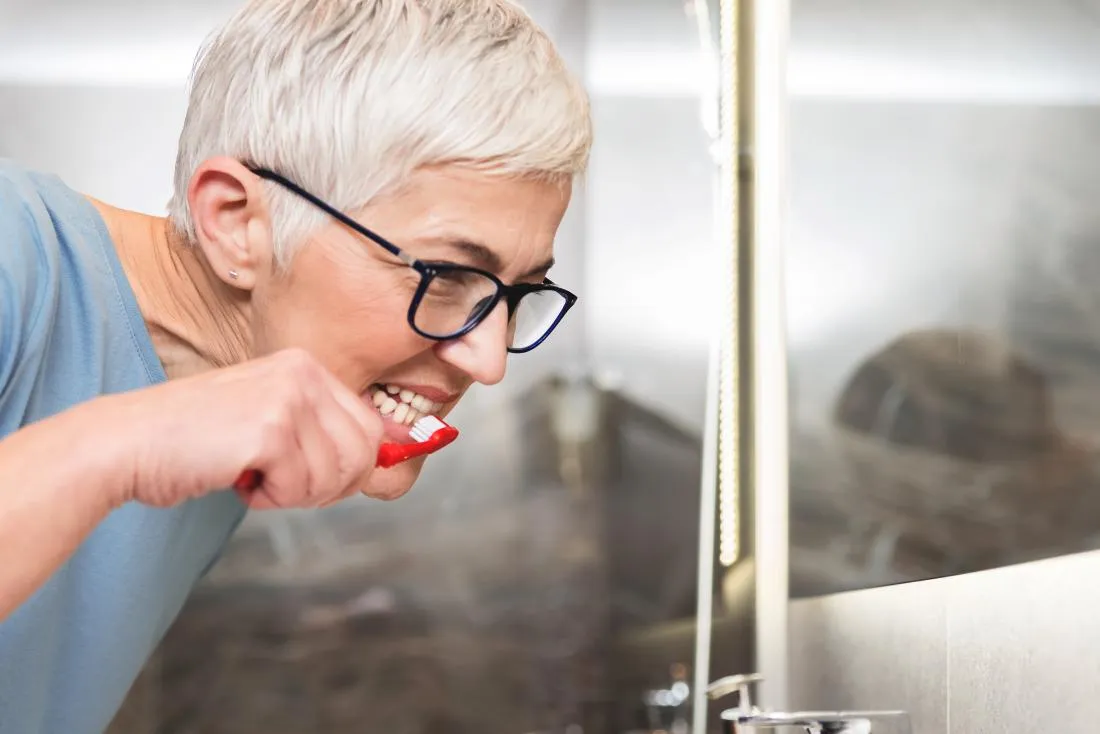Understanding Hydrogen Peroxide for Teeth Whitening
Achieving a brighter smile is a common goal, and many people turn to home remedies for teeth whitening. Among the most popular and accessible options is hydrogen peroxide. This simple compound, often found in your medicine cabinet, has been used for decades for its cleaning and bleaching properties. Understanding how hydrogen peroxide works and how to use it safely is key to effectively incorporating it into your oral hygiene routine. While it can be effective, it’s essential to approach it with knowledge and caution to avoid potential drawbacks. This article will delve into five simple, yet effective home remedies for teeth whitening using hydrogen peroxide, highlighting safety considerations and providing you with the information you need to make informed decisions about your dental care.
How Hydrogen Peroxide Works
Hydrogen peroxide, chemically represented as H2O2, is a mild antiseptic and oxidizing agent. Its teeth-whitening capabilities stem from its ability to penetrate the enamel of your teeth and break down stain molecules. This process is essentially a chemical reaction where the oxygen released from the hydrogen peroxide oxidizes the organic compounds that cause discoloration, effectively lightening the shade of your teeth. The effectiveness of hydrogen peroxide for teeth whitening depends on the concentration of the solution and the duration of its application. Lower concentrations are generally safer for home use, while higher concentrations are typically used in professional dental settings for more dramatic results. The oxidizing action targets the stains caused by coffee, tea, wine, and other foods and drinks, leaving your teeth looking brighter and more vibrant.
Safety Considerations
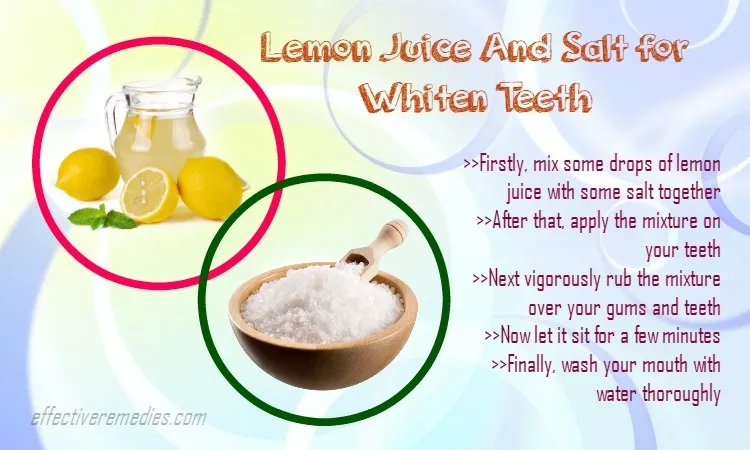
While hydrogen peroxide can be an effective teeth whitening agent, it’s important to use it with caution. The primary safety concerns revolve around the potential for irritation and damage to your oral tissues. High concentrations of hydrogen peroxide can cause significant irritation to the gums and soft tissues in your mouth. Prolonged or frequent use can also lead to enamel erosion, making your teeth more susceptible to decay and sensitivity. Always use the recommended concentration for home use (typically 3%) and avoid swallowing the solution. It’s also crucial to consult with your dentist before starting any teeth-whitening treatment, especially if you have existing dental work, such as fillings or crowns. They can assess the health of your teeth and gums and advise you on the safest and most effective approach for your specific situation. Proper use and professional guidance are crucial for minimizing risks and maximizing benefits.
5 Simple Home Remedies for Teeth Whitening
Hydrogen Peroxide and Baking Soda
This combination is a popular and effective teeth whitening method. Baking soda acts as a gentle abrasive that helps to remove surface stains, while hydrogen peroxide provides the bleaching action. Together, they create a powerful combination that can help to brighten your smile. Always be gentle when brushing with this mixture to avoid damaging your enamel. The key is consistency and moderation, not aggressive scrubbing. This mixture is best for occasional use, not as a daily routine. This helps avoid unnecessary wear and tear on your tooth enamel, allowing you to get the most out of the treatment without compromising long-term dental health. This simple remedy offers an accessible and affordable way to enhance your smile from the comfort of your home.
How to Prepare the Mixture
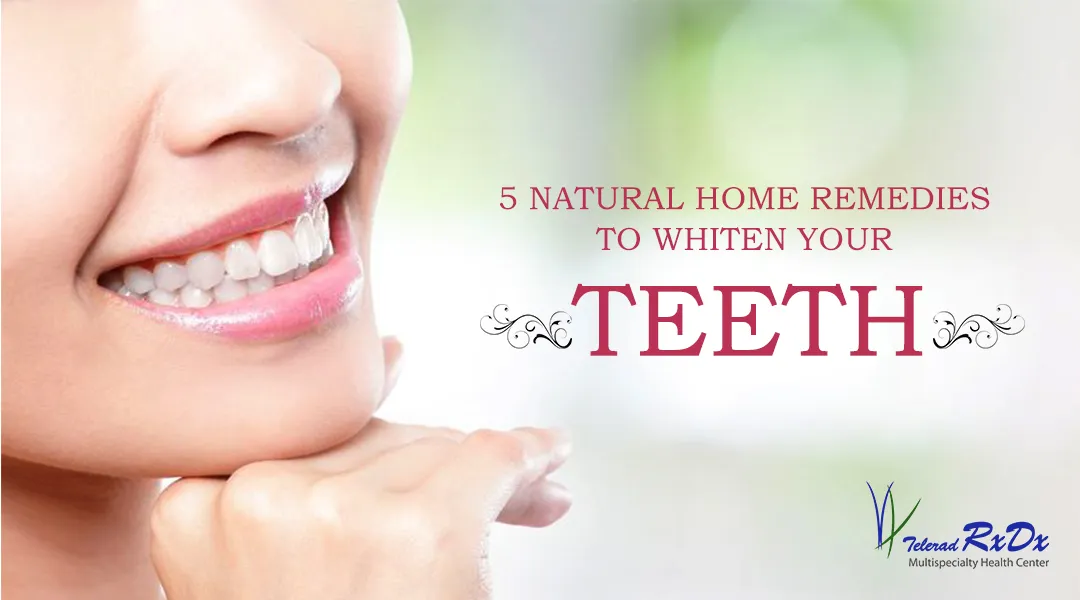
To prepare this mixture, combine one tablespoon of baking soda with two tablespoons of 3% hydrogen peroxide. Mix them together until you create a paste. Adjust the amount of hydrogen peroxide to achieve the desired consistency. It should be thick enough to stick to your teeth but not so thick that it is difficult to apply. Make sure that the paste does not become overly dry, as this can make the abrasion more intense. Proper preparation is essential for ensuring that the remedy is easy to use and effective, without being overly abrasive. For best results, use a soft-bristled toothbrush and apply gentle pressure when brushing to avoid damaging the enamel.
Application and Usage
Apply the paste to your toothbrush and brush your teeth gently for about two minutes. Pay attention to all surfaces of your teeth, but avoid harsh scrubbing. Rinse your mouth thoroughly with water after brushing. It is advisable to use this mixture no more than once or twice a week to avoid enamel erosion. After using the paste, you may also want to use a regular fluoride toothpaste to remineralize your teeth. Regular fluoride use can help strengthen the enamel and reduce the risk of sensitivity. Consistent use will enhance the whitening effects while reducing the risk of complications. Remember to always consult with a dentist if you experience any discomfort or increased sensitivity.
Hydrogen Peroxide and Water
A simple and effective way to use hydrogen peroxide for teeth whitening is by using it as a mouthwash. This method is gentle, convenient, and can be easily incorporated into your daily oral hygiene routine. It offers a less abrasive alternative to other whitening methods, reducing the risk of damaging the tooth enamel. Regular use helps to keep your mouth clean, and may also contribute to a brighter smile over time. The mouthwash is easy to prepare, and suitable for everyday use. This method is ideal for those looking for a milder approach to teeth whitening, and is often preferred by those who experience tooth sensitivity.
Mouthwash Solution
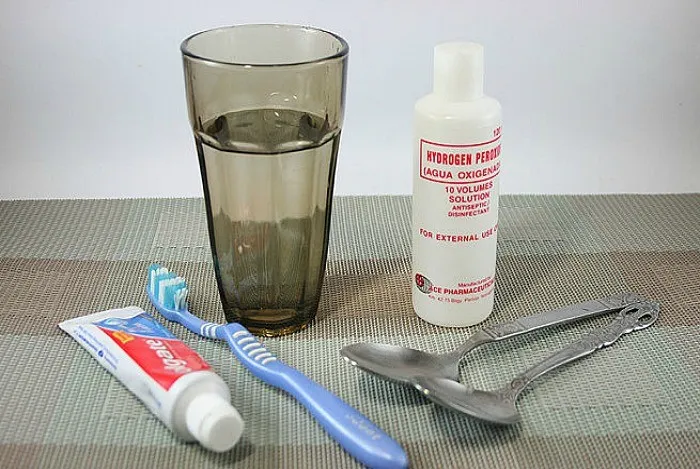
To make a hydrogen peroxide mouthwash, mix equal parts of 3% hydrogen peroxide and water. This dilution is important to ensure that the solution is safe for use in your mouth. Undiluted hydrogen peroxide can cause irritation and damage the oral tissues. Rinsing your mouth with this solution for about 30-60 seconds can help whiten your teeth and freshen your breath. The water further dilutes the hydrogen peroxide, minimizing the chances of any adverse reactions. Make sure to use a fresh solution each time, and avoid swallowing the mixture. This mouthwash provides a gentle way to enhance your oral health, contributing to both the whiteness and overall cleanliness of your teeth.
Proper Usage
After brushing and flossing your teeth, rinse your mouth thoroughly with the hydrogen peroxide and water solution. Swish the solution around your mouth, ensuring that it comes into contact with all surfaces of your teeth. After 30 to 60 seconds, spit it out and rinse your mouth with water. It is advisable not to swallow any of the solution. Proper usage includes consistent application and the use of the correct dilution for optimal and safe results. Regular use of this mouthwash can also assist in maintaining a clean and healthy mouth, promoting long-term dental health. This routine can easily be incorporated into your daily oral hygiene routine. It requires minimal time and effort. It is also a great option for those seeking a simple teeth whitening solution.
Hydrogen Peroxide and Coconut Oil
Oil pulling with coconut oil, combined with hydrogen peroxide, is another popular method for teeth whitening. Coconut oil is known for its natural antibacterial properties, and it can help to remove bacteria and toxins from the mouth. Adding a small amount of hydrogen peroxide to this practice can boost the whitening effects. However, it is important to be cautious, as this method can be more potent than others. This combination uses the natural cleansing and antibacterial properties of coconut oil. It offers an alternative approach to traditional teeth whitening methods. It is a combination that many people find soothing and effective.
Oil Pulling Technique
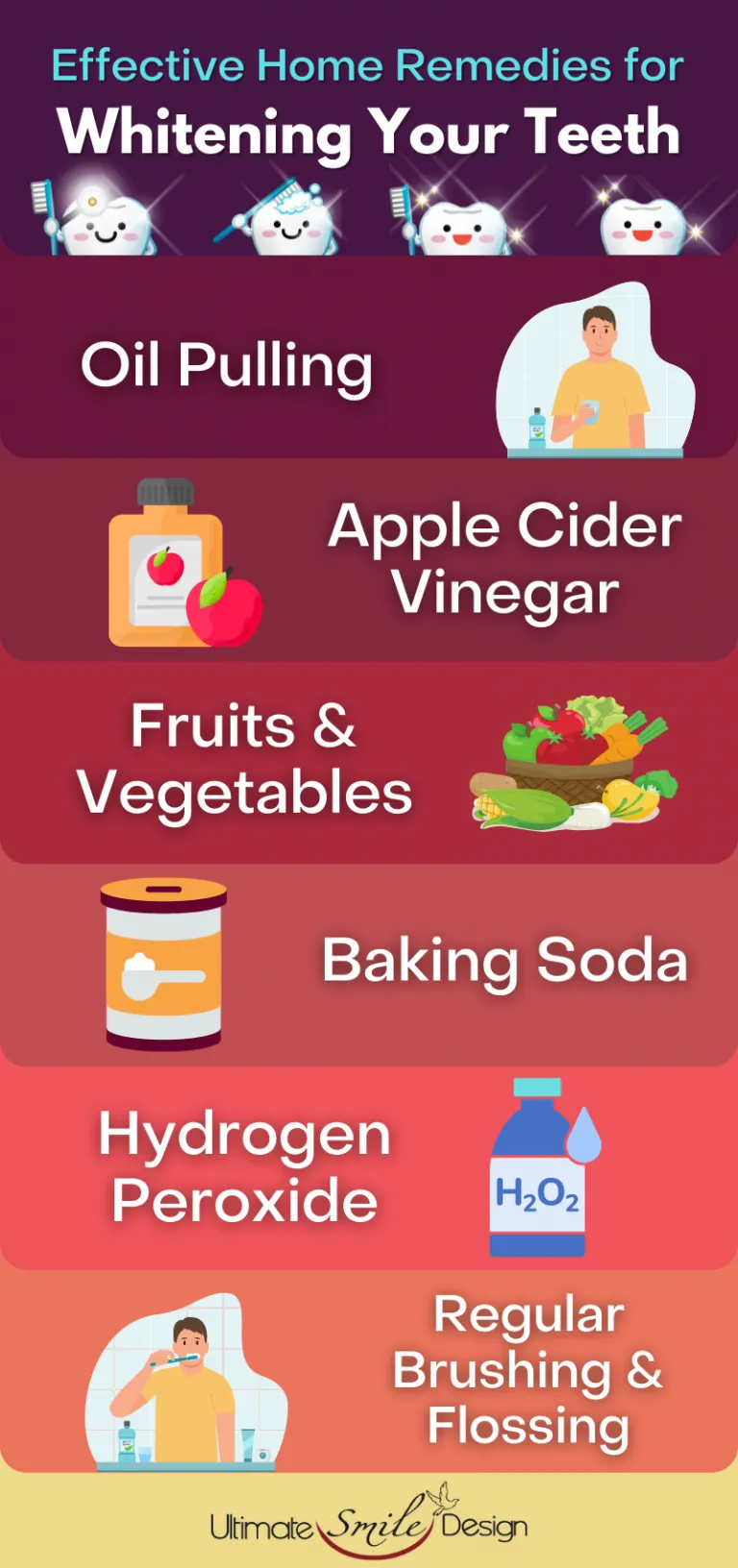
Start by taking one tablespoon of coconut oil and swishing it around your mouth for 10 to 15 minutes. Add a few drops of 3% hydrogen peroxide to the coconut oil before swishing. Ensure you do not swallow any of the mixture. As you swish, the oil and hydrogen peroxide will mix with your saliva and help to remove bacteria and toxins from your mouth. After swishing, spit the mixture into a trash can to avoid clogging your drains. Rinse your mouth with water and brush your teeth as usual. This technique should be done on an empty stomach, ideally in the morning before breakfast. Consistent oil pulling, combined with hydrogen peroxide, can contribute to whiter teeth and improved oral health over time.
Benefits of Oil Pulling
Oil pulling can offer several benefits beyond teeth whitening. It may help to reduce plaque and gingivitis, contributing to healthier gums. The practice can also improve overall oral hygiene and freshen breath. Coconut oil also contains properties that might reduce the amount of bacteria that can cause cavities. Many people find that oil pulling leaves their mouths feeling cleaner and fresher. The combination of oil pulling and hydrogen peroxide can offer a more comprehensive approach to teeth whitening. Consistent use may also improve the overall health of your mouth. It is crucial to use the method as directed and maintain a well-balanced oral hygiene routine, including regular brushing and flossing.
Hydrogen Peroxide and Salt
Salt can also be used in combination with hydrogen peroxide to create a teeth-whitening paste. Salt acts as a gentle abrasive and can help to remove surface stains. This remedy offers a natural and accessible option for whitening teeth, providing a straightforward way to enhance your smile from the comfort of your own home. However, caution is important, as the abrasive nature of salt may wear away tooth enamel. This mixture can also provide benefits beyond just teeth whitening. This provides a good option for those seeking a more traditional approach to teeth whitening. It is important to balance the abrasiveness of salt with proper application and moderation to ensure the health of your teeth.
Creating the Paste
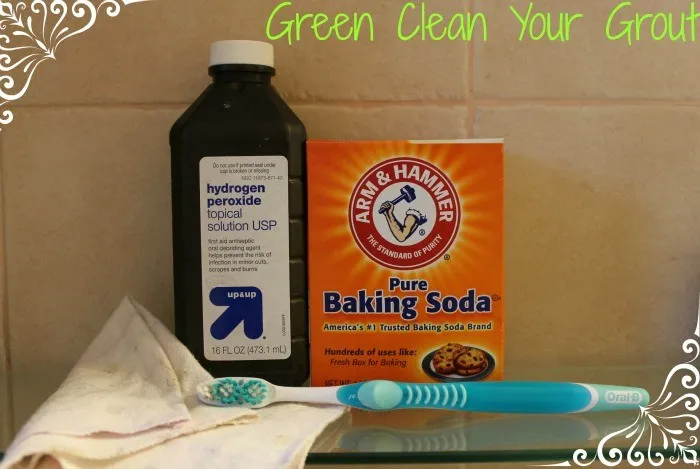
To create this paste, mix a small amount of salt (about a quarter of a teaspoon) with hydrogen peroxide to form a paste. You can adjust the amount of hydrogen peroxide as needed to get a consistency that is easy to apply to your teeth. Use a small bowl and a non-metallic spoon to mix the ingredients, as hydrogen peroxide can react with certain metals. Make sure the paste is not too thick to prevent abrasion. The paste should be thick enough to adhere to the surface of your teeth. Always make sure the ingredients are mixed well before application. Proper preparation is key for achieving the desired results without any negative consequences. This method offers a simple and effective way to enhance your oral hygiene, with the added benefit of potential teeth whitening.
Application Tips
Apply the paste to your toothbrush and brush your teeth gently for no more than one to two minutes. Be sure to use a soft-bristled toothbrush to minimize abrasion. Avoid brushing too hard, as this can erode the enamel and increase sensitivity. After brushing, rinse your mouth thoroughly with water. It is recommended to use this paste no more than once or twice a week. This helps to minimize any potential damage to your tooth enamel. Following the application, consider using regular fluoride toothpaste to strengthen your teeth. This can help to reduce sensitivity and strengthen the enamel. Using the correct application techniques ensures that you get the best results, with minimal risk of side effects.
Hydrogen Peroxide and Lemon Juice
The combination of hydrogen peroxide and lemon juice is another home remedy that can be used for teeth whitening. The acidity of lemon juice combined with the bleaching properties of hydrogen peroxide is believed to enhance teeth whitening. This option has been used by those seeking a natural and accessible way to improve their smile. However, it is important to be extremely cautious when using this method due to the high acidity of lemon juice, which can be very damaging to tooth enamel. The acidity of the lemon juice can potentially erode the enamel, increasing the risk of tooth sensitivity and decay. The combined action of the lemon juice and hydrogen peroxide can be very potent, and it’s essential to use it in moderation to avoid harming your teeth.
Precautions
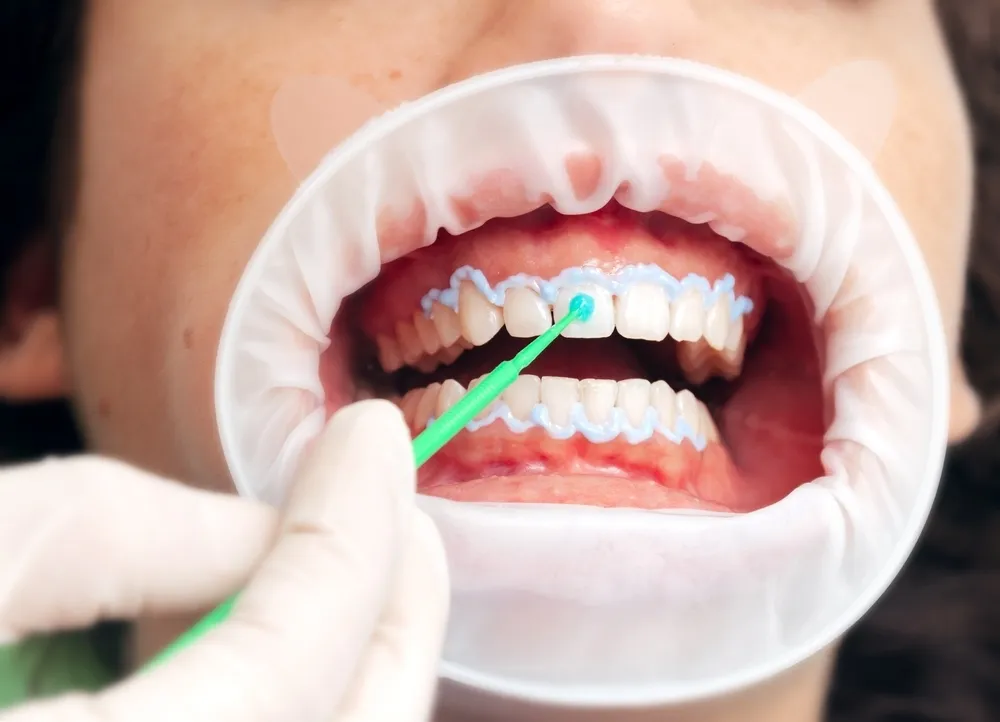
When using this method, the utmost caution is necessary. The high acidity of lemon juice makes it very potentially damaging to your tooth enamel. Always dilute the lemon juice with water before mixing it with hydrogen peroxide. Never use this mixture more than once a week and avoid leaving it on your teeth for more than a minute. It is always advisable to rinse your mouth thoroughly with water after using the solution. The acidity of lemon juice can erode the enamel. This can lead to tooth sensitivity and increase the risk of decay. Using this remedy too often or with too much lemon juice can cause significant dental problems. The best approach to using this method is to only use it as a last resort and consult your dentist before using it. This will provide safety and dental health.
Potential Side Effects
While home remedies for teeth whitening can be effective, it’s important to be aware of the potential side effects. The most common side effects are sensitivity and gum irritation. These side effects may occur due to the oxidizing properties of hydrogen peroxide. While these side effects are not always serious, you should seek professional dental care. Overuse or high concentrations of hydrogen peroxide can also cause enamel erosion. This can weaken your teeth and make them more vulnerable to decay. Being aware of the potential side effects is essential for ensuring the health and safety of your teeth. Knowing how to respond to such effects can help you maintain your oral health while pursuing a brighter smile. You must consult a dentist if you experience any discomfort.
Sensitivity
Tooth sensitivity is a common side effect of teeth whitening with hydrogen peroxide. You may experience a sharp, sudden pain when consuming hot or cold foods and beverages. This sensitivity occurs because hydrogen peroxide can penetrate the enamel and reach the nerves in your teeth. Reducing the frequency of treatments, using lower concentrations, or applying fluoride treatments can help minimize sensitivity. Always consult with your dentist if the sensitivity is severe or persistent. They can offer advice on how to manage it and suggest alternative treatments. This may involve using a desensitizing toothpaste or other professional treatments. Proper treatment of sensitivity will provide relief, and can help prevent more serious problems.
Gum Irritation
Gum irritation is another potential side effect that can occur with hydrogen peroxide use. Your gums may become red, swollen, or tender, especially if the hydrogen peroxide comes into direct contact with them for extended periods. This can happen if the concentration of hydrogen peroxide is too high, or if you use it too frequently. Using a lower concentration and avoiding contact with your gums can help reduce irritation. Brushing gently and avoiding harsh scrubbing is also important. If you experience significant gum irritation, it is best to stop the treatment and consult with your dentist. They can assess the condition of your gums and recommend appropriate treatment. Proper management and care can help reduce or eliminate this side effect.
Enamel Erosion
Enamel erosion is a more serious, potential side effect of using hydrogen peroxide for teeth whitening. Prolonged or frequent use, especially with high concentrations, can weaken your enamel. The outer protective layer of your teeth. Enamel erosion can increase tooth sensitivity, make your teeth more susceptible to cavities, and lead to a change in the appearance of your teeth. Using lower concentrations, avoiding prolonged exposure, and not using this remedy too often can reduce the risk. Maintaining good oral hygiene and following the dentist’s advice can help prevent enamel erosion. Regular check-ups with a dentist will make sure you have healthy teeth and gums.
Maintaining Whitened Teeth
Once you have achieved the desired level of whiteness, it’s important to maintain your results. Regular oral hygiene practices and dietary considerations play a significant role. You should continue these practices to avoid new stains and keep your teeth looking bright. You can also use certain products and habits that will provide long-term effectiveness. Proper care helps in retaining the results of your whitening efforts, and maintaining a healthy, radiant smile. This will ensure that your efforts are not wasted. Following these tips will help you maintain your results and enjoy a beautiful smile for a long time.
Oral Hygiene Practices
Brush your teeth at least twice a day with fluoride toothpaste. Floss daily to remove plaque and food particles from between your teeth. This helps remove stains, which can cause teeth discoloration. Regular dental check-ups and professional cleanings will ensure you maintain your oral health. Using mouthwash can help to remove food particles and other debris. These practices will help prevent stains and keep your teeth healthy. Proper oral hygiene is essential for maintaining a white and healthy smile. Following these simple practices can greatly improve your overall oral health and the appearance of your teeth.
Dietary Considerations
Certain foods and beverages can stain your teeth, such as coffee, tea, red wine, and berries. Limiting your intake of these foods and drinks can help prevent staining. Rinse your mouth with water after consuming them, or brush your teeth if possible. Avoiding smoking and tobacco products is also crucial, as they are major causes of tooth discoloration. Consider using a straw for drinks that can stain your teeth. These simple habits can make a big difference in preventing new stains. A balanced diet and a well-cared for smile is important. Making these small changes can greatly impact the longevity of your white smile.
